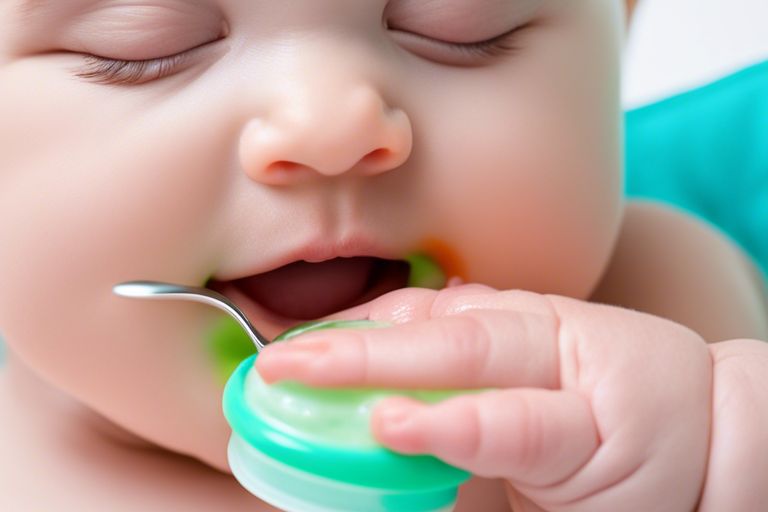tips, tricks and guides for parenthood
It's important for parents to find a balance when it comes to using pacifiers and maintaining healthy feeding habits for their babies. While pacifiers can provide comfort and help soothe a fussy baby, they should not replace nutritious breast milk or formula feedings. Overuse of pacifiers can lead to dental issues, such as misaligned teeth, as well as interfere with a baby's feeding schedule. By limiting pacifier use to specific times, such as nap or bedtime, and prioritising regular feeding routines, parents can ensure their baby's overall health and well-being.
Some parents may wonder about the benefits of using a pacifier for their baby. According to Healthy Eating (for Parents) | Nemours KidsHealth, pacifiers can offer soothing effects and potential sleep aid benefits when used appropriately.
Pacifiers can provide comfort and help babies self-soothe, especially during times of distress or when they need to calm down. This can be particularly helpful during teething or when babies are feeling fussy.
Effects on sleep patterns can vary, but some babies find comfort in using a pacifier to help them drift off to sleep. It is important to note that while pacifiers can aid in soothing babies to sleep, they should be used safely to reduce the risk of dependency or other issues.
With proper use and supervision, pacifiers can be a helpful tool for both babies and parents in promoting healthy sleep habits and providing comfort during challenging times.

To ensure a healthy balance between pacifier use and feeding habits, it is necessary to consider the impact on breastfeeding. Using a pacifier too frequently can lead to decreased milk supply as the baby may prefer the pacifier over nursing. This can result in poor weight gain and potentially affect the baby's overall nutrition. It is important to monitor the baby's feeding patterns and ensure they are getting enough milk during breastfeeding sessions.
The concerns of pacifier overuse also extend to dental and speech development. Prolonged use of a pacifier can impact the alignment of teeth and lead to speech delays as the mouth muscles may not develop properly. For instance, using a pacifier beyond 2-4 years old can significantly increase the risk of dental issues such as overbite and misaligned teeth.
After welcoming your little one into the world, it's vital to consider the timing and moderation of pacifier use. While pacifiers can be soothing, using them too frequently or at the wrong times can interfere with establishing healthy feeding habits. It's important to strike a balance and not rely on the pacifier as a constant crutch.
Moderation is key when it comes to juggling pacifiers and feeding schedules. Try to limit pacifier use to specific times, such as naptime or bedtime, to avoid any disruptions to your little one's appetite. Additionally, be mindful of cues that indicate hunger, so you can differentiate between genuine hunger and comfort-seeking behaviour.
With a balanced approach, you can ensure that your baby receives all the necessary nutrition while also enjoying the comfort of a pacifier when needed. Note, every baby is different, so it's imperative to observe your little one's unique habits and adjust your strategies accordingly for a harmonious balance.
Now, as parents navigate the world of pacifier use while ensuring healthy feeding habits for their little ones, here are some practical tips to help strike the right balance:
Recognizing the importance of maintaining a harmonious approach is key.
Parents, when selecting a pacifier for your child, consider options that are orthodontic-approved to support proper jaw development. Look for designs that are BPA-free and easy to clean to ensure your baby's health and safety.
Parents, when it comes to weaning your child off the pacifier, remember that a gradual approach often works best. Start by limiting pacifier use to specific times, such as naps or bedtime. Encourage other soothing techniques like cuddling or singing to help your little one transition smoothly.
Pacifier weaning can be challenging, but consistency and patience are key. Positive reinforcement and gentle encouragement can help your child adapt to new routines without relying on the pacifier.
So, it is important to strike a balance between using pacifiers and promoting healthy feeding habits for your baby. While pacifiers can provide comfort and soothe your little one, relying on them too heavily can interfere with proper feeding patterns and oral development. It is advisable to limit pacifier use, especially during mealtimes, and encourage self-soothing techniques. Ensuring that your baby is well-fed and nurtured through proper feeding practices will contribute to their overall health and well-being. By being mindful of how and when you use pacifiers, you can help your child develop a healthy relationship with food and oral care from an early age.
A: Balancing pacifier use with healthy feeding habits involves ensuring that the pacifier is not used as a replacement for feeding. It should be used for soothing purposes only, such as naptime or bedtime.
A: It is recommended to introduce a pacifier to your baby after breastfeeding has been established, usually around 3-4 weeks of age. This helps prevent nipple confusion and ensures proper feeding.
A: It is safe for babies to use a pacifier for a few hours a day, especially during naptime or bedtime for soothing purposes. However, it is important not to exceed this limit to avoid any negative impact on feeding habits.
A: Excessive pacifier use can lead to nipple confusion, which may interfere with breastfeeding. It can also increase the risk of ear infections and dental issues if used for prolonged periods of time.
A: To wean your baby off the pacifier, gradually reduce the time they use it and offer alternative comfort measures such as cuddling or a favourite toy. Be patient and consistent to make the transition smoother for your baby.